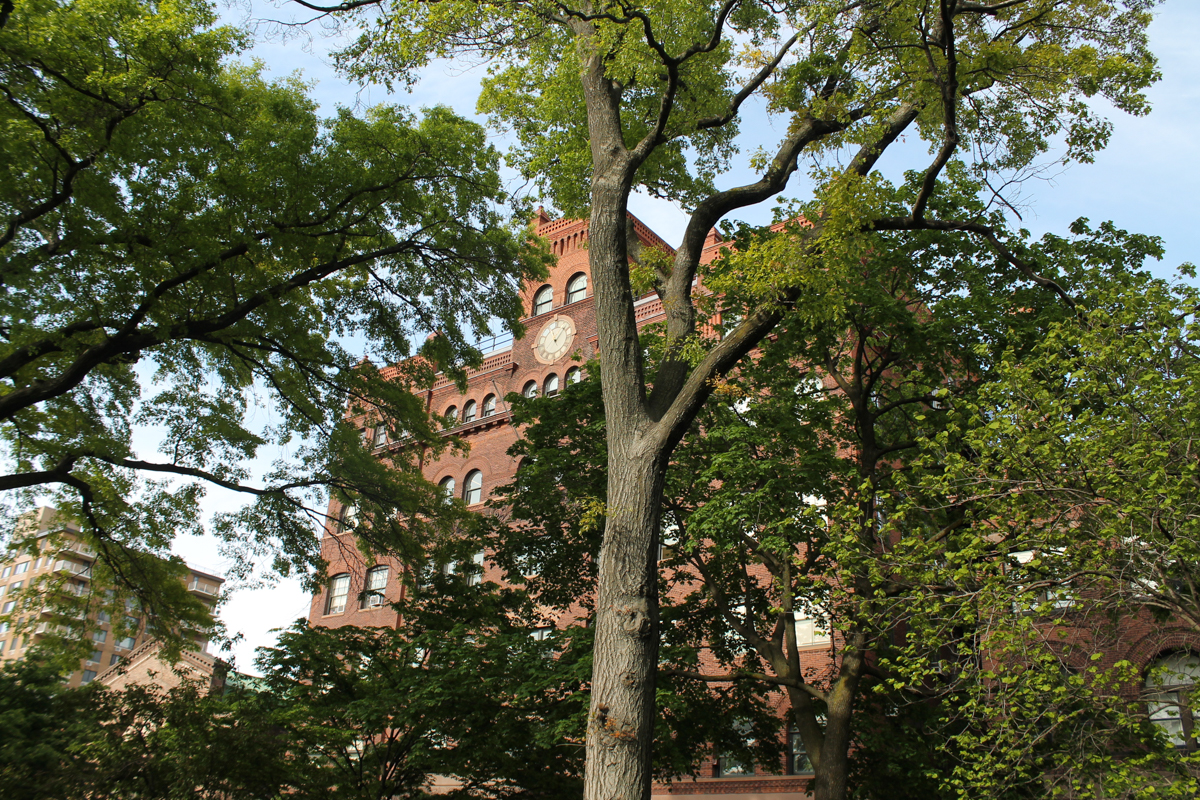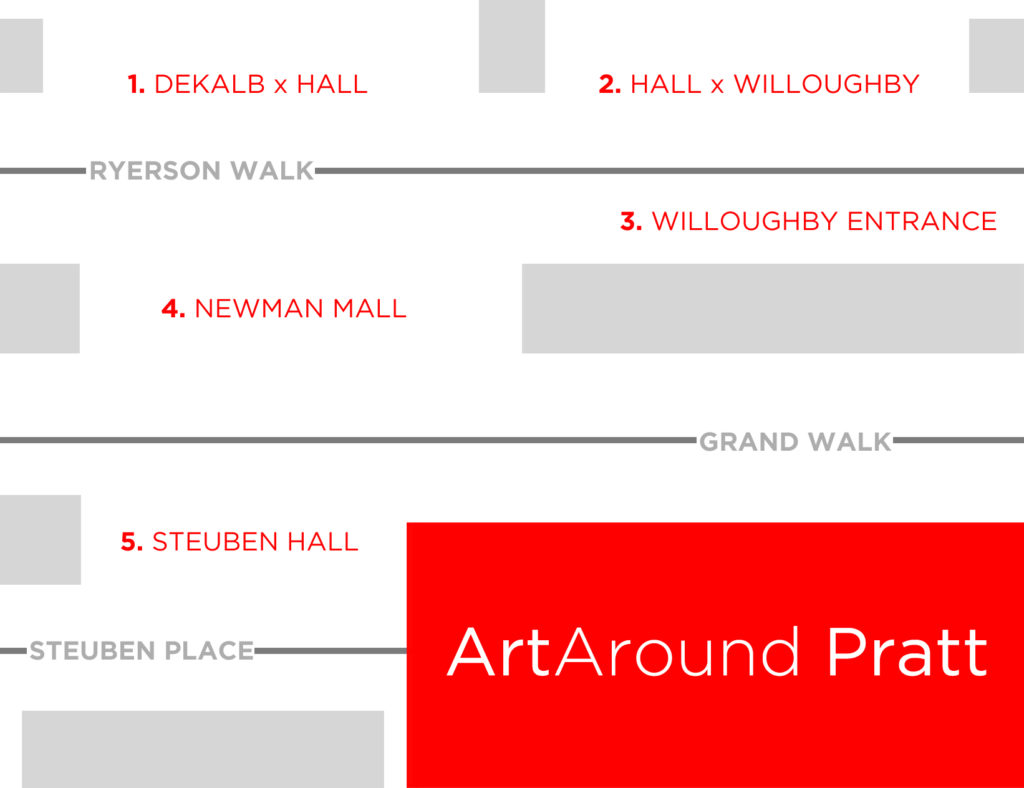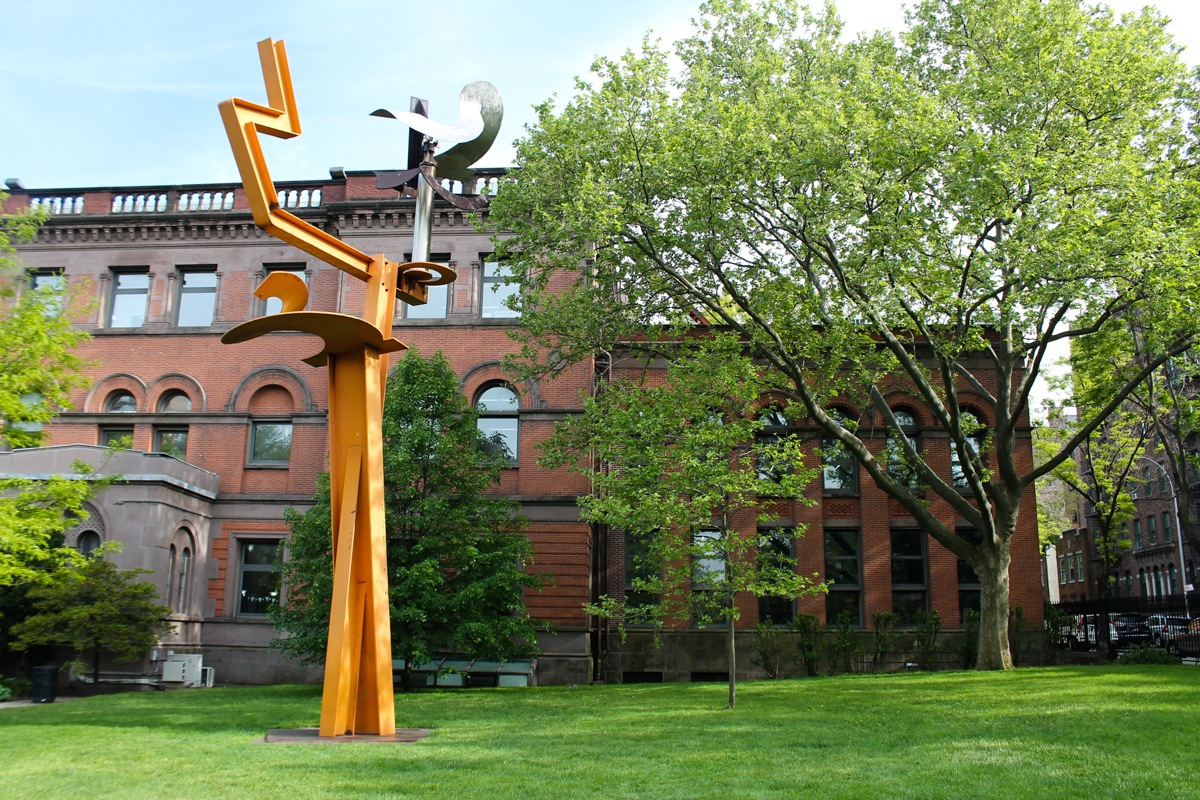
Between Dekalb Avenue, Hall Street, Willoughby and Classon Avenues, there are more than fifty sculptures on view outside all year for free. Pratt Institute’s Sculpture Park has been growing since a 1926 memorial was commissioned to honor the students serving in World War I. Since 1998 it’s been curated by David Weinrib, a sculptor and artist who was a resident potter at Black Mountain College’s first Crafts Institute in 1952. Eighteen years after founding the sculpture garden, Weinrib passed away in February 2016 at the age of 91. “I liken the Sculpture Park to a symphony,” he once said, “our challenge is to bring all of the parts in harmony.”
 When I first stepped on campus to start their master’s program in the fall of 2015, it seemed too perfect—ArtAround documents public art and here there’s a goldmine. When I found out the school offered a Graduate Student Engagement Grant, I applied for ArtAround. Now, those fifty-plus works are all on the ArtAround map, categorized by area for easy access:
When I first stepped on campus to start their master’s program in the fall of 2015, it seemed too perfect—ArtAround documents public art and here there’s a goldmine. When I found out the school offered a Graduate Student Engagement Grant, I applied for ArtAround. Now, those fifty-plus works are all on the ArtAround map, categorized by area for easy access:
- Dekalb x Hall: In front of the library
- Hall x Willoughby: Behind the library
- Willoughby Entrance: At Ryerson Gate
- Newman Mall: Between Grand Ave & Ryerson St
- Steuben Hall: Between Steuben St & Grand Ave
Mark di Suvero’s “Jive” nearly reaches the top of the library it sits behind. And Donald Lipski’s 1996 piece “F.R.S.B” looks like a simple circle until you realize it’s made of shovels. Another highlight is Philip Grausman’s “Leucantha,” an elegant portrait that the artist describes as a landscape, the surface perfected to create hills and valleys within the woman’s face. The oldest work on campus is “Blade,” a 1971 piece by Jack Youngerman, an abstract 20th century artist whose work was inspired by Henri Matisse.


Find all the artworks in Pratt Institute’s Sculpture Park, and add new artwork you find anywhere to help us expand our database. We’re still working out the kinks in our new and improved (/improving!) web and iOS applications, so if you encounter an error when viewing or uploading artworks, let us know.
A huge thank you to the Pratt Graduate Student Engagement Fund Committee for the funds to bring the school’s expansive sculpture garden to the ArtAround map. The locations of the artworks change from year to year, so if you’re reading this post in the future and you notice there’s something new or different, add to or edit the map to help us document the art that shapes our public spaces.
To let people know these works are online, I’ll be at Pratt’s Alumni Day on Saturday, handing out maps in front of the library. Stop by and grab a sticker!
Leave a Reply